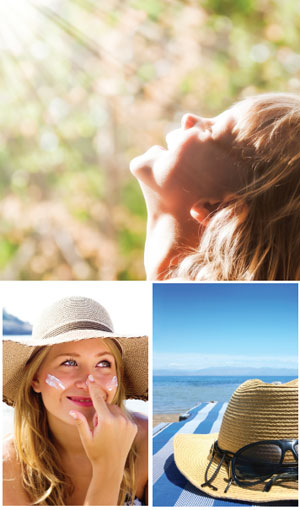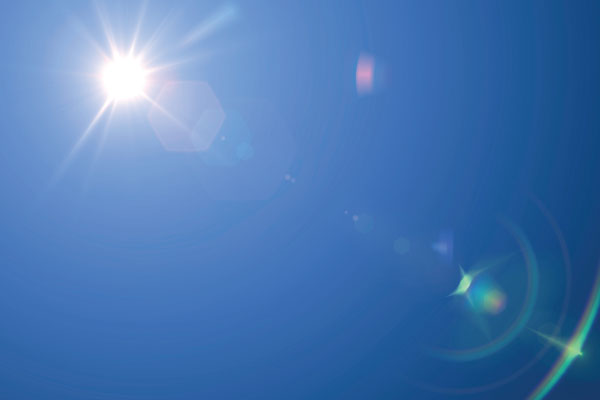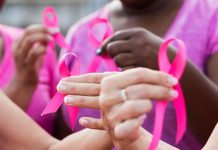With the nip in the air long gone, islanders are getting ready to brave the summer sun. Should beachcombers stroll the sands with carefree abandon or must we beware the effects of the scorch? Behnaz Sanjana finds out.
Public messages with regards to protecting oneself from the sun have been doing the rounds lately, and with good reason. We’ve heard of the horrors of too much sun exposure – wrinkles, freckles, sun spots and alarmingly, skin cancer. So we slather on the sunscreen, but then are we blocking out the life-essential Vitamin D?
Stay out of the sun or get some sun; what’s the right thing to do? Experts say it’s a delicate balancing act between
adequate protection from and prudent exposure to the sun.
Skin Cancer Facts
 Skin cancer is the uncontrolled growth of abnormal skin cells, caused by ultraviolet radiation from sunshine or tanning beds.
Skin cancer is the uncontrolled growth of abnormal skin cells, caused by ultraviolet radiation from sunshine or tanning beds.
It is the most common form of cancer in the US and has increased incidence in Bahrain as well.
There are different types of skin cancers; the deadliest one being melanoma.
“Everyone should practice safety in the sun, but some of us who are fair-skinned and have light eyes and hair must be especially cautious,” says dermatologist Dr Bhartendu Mehta of the American Mission Hospital. Those with a family history of skin cancer or who spend long hours in the sun or who sunburn easily must be wary too.
And don’t forget to shade your eyes. “Although the eyelid is designed to protect the eye, its skin is exceedingly thin and contains many fragile tissues that may be injured by UV light. Inside the eye, the lens and the cornea filter UV rays, but by doing so for many years, they may become damaged,” Dr Mehta says. So it makes sense to invest in a good pair of UV protective sunglasses for the outdoors.
Catch and Prevent
Dr Anjali Palav, specialist dermatologist at the Bahrain Specialist Hospital, advocates examining your skin under bright light on a regular basis. Use a handheld mirror or ask a family member to help you in examination. Learn to spot the early warning signs; skin cancer can be cured if it’s found and treated early.
“Be especially suspicious of a new mole, any mole which is changing in size or shape or any red scaly spot,” she advises.
For those who enjoy sporting a ‘healthy’ tan, listen up. Dr Anjali says: “The high-pressure sunlamps used in tanning salons emit doses of UVA and UVB as much as 12 times that of the sun. This exposure will damage the skin’s cellular DNA which leads to mutations and skin cancers.”
So stay away from artificial tanning and layer up on the SPF. But which sunscreen is the right one? “A broad spectrum sunscreen for protection of both UVA and UVB rays is important for all people for daily use.
Select SPF (Sun Protection Factor) 15-30 sunscreen for regular use. Higher SPF does
not necessarily give more protection,” says Dr Anjali.
A liberal use of sunscreen on exposed body parts is essential. One ounce (5-6 teaspoons) of sunscreen, or roughly one palmful of sunscreen reapplied every two hours is what our expert recommends.
And here’s why you must not skimp on sunscreen. “Using a thin layer only provides the square root of the SPF. For example, a thin layer of SPF 30 sunscreen only provides an effective SPF of 5.5,” warns Dr Anjali.
Parents must ensure their children are protected from sunburn, as many studies have observed that frequent sunburn in childhood is associated with increased risk of skin cancers in adult life.
Besides sunscreen, Dr Anjali gives us essential pointers on sun safety. “One should limit exposure to the sun’s ultraviolet rays, especially between 10am and 4pm, when the sun’s rays are strongest. Wear a hat and sunglasses, and cover up with clothing,” she says.
D is for Deficiency
The other end of the skin cancer spectrum is a deficiency of Vitamin D, caused by inadequate sun exposure. Dr Babu Ramchandran of the American Mission Hospital, Amwaj, says that Vitamin D deficiency is a highly prevalent condition in around 30 to 50 per cent of the general population, more so in the elderly, women of child bearing age and infants.
The sun’s rays interact with our skin to produce Vitamin D that helps the body absorb calcium, thereby contributing towards bone and muscle health.
The deficiency of this ‘sunshine vitamin’ causes rickets, a bone-related condition, in children as well as bone pain and muscle weakness. It also makes you feel blue more often than normal and puts you at risk for osteoporosis.
Dr Babu observes that it is only in the last five to six years that he has seen people being investigated for Vitamin D deficiency and its notably high prevalence in the population.
“The increasing incidence of Vitamin D deficiency cases may be due to the present lifestyle worldwide, where people have limited exposure to sunlight,” he says.
There are steps you can take, besides a healthy dose of early morning sunshine to avoid or set right a Vitamin D deficiency.
Eggs, fish liver oils such as cod liver oil and fatty fish – herring, catfish, salmon, mackerel etc. are good sources of Vitamin D. Stocking up on fortified milk products and cereals can also help.
In cases of Vitamin D deficiency, the health care provider may put the person on Vitamin D supplements or injections.





































